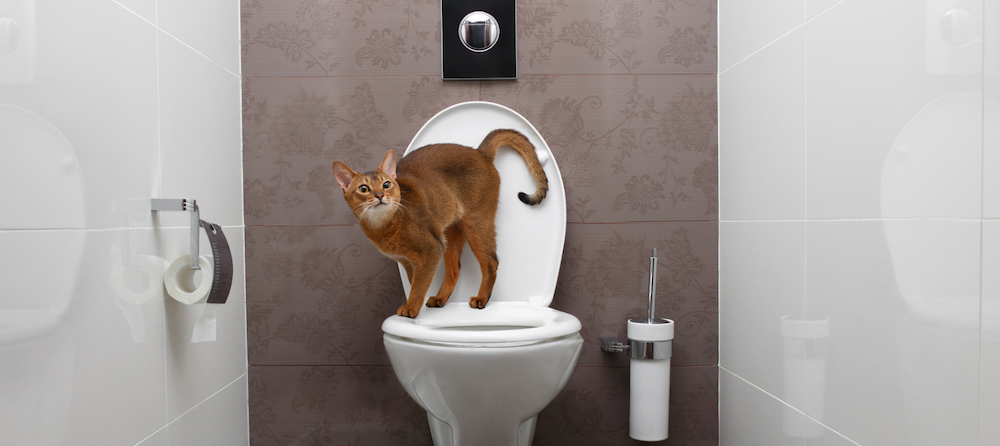Why Flushing Cat Poop Down Your Toilet Can Cause Problems - Tips for Proper Handling
Why Flushing Cat Poop Down Your Toilet Can Cause Problems - Tips for Proper Handling
Blog Article
Do you find yourself trying to find help How to Dispose of Cat Poop and Litter Without Plastic Bags?

Introduction
As cat owners, it's necessary to be mindful of exactly how we take care of our feline friends' waste. While it might seem convenient to flush cat poop down the bathroom, this method can have damaging effects for both the setting and human health.
Ecological Impact
Flushing feline poop presents unsafe pathogens and parasites into the supply of water, posing a substantial risk to aquatic ecosystems. These impurities can adversely affect marine life and compromise water top quality.
Wellness Risks
Along with environmental issues, purging feline waste can also position wellness dangers to people. Cat feces may contain Toxoplasma gondii, a bloodsucker that can trigger toxoplasmosis-- a potentially serious disease, particularly for expectant ladies and individuals with weakened body immune systems.
Alternatives to Flushing
Fortunately, there are more secure and extra liable methods to throw away feline poop. Consider the complying with alternatives:
1. Scoop and Dispose in Trash
The most usual approach of taking care of pet cat poop is to scoop it right into an eco-friendly bag and toss it in the garbage. Be sure to make use of a committed trash scoop and dispose of the waste without delay.
2. Usage Biodegradable Litter
Choose naturally degradable feline litter made from materials such as corn or wheat. These clutters are eco-friendly and can be safely disposed of in the garbage.
3. Bury in the Yard
If you have a yard, think about burying pet cat waste in an assigned area far from veggie yards and water sources. Be sure to dig deep adequate to prevent contamination of groundwater.
4. Mount a Pet Waste Disposal System
Purchase a family pet waste disposal system especially developed for feline waste. These systems use enzymes to break down the waste, lowering odor and ecological impact.
Final thought
Responsible family pet possession extends past giving food and shelter-- it likewise entails appropriate waste administration. By refraining from purging cat poop down the bathroom and going with alternative disposal techniques, we can decrease our ecological footprint and shield human health.
Why Can’t I Flush Cat Poop?
It Spreads a Parasite
Cats are frequently infected with a parasite called toxoplasma gondii. The parasite causes an infection called toxoplasmosis. It is usually harmless to cats. The parasite only uses cat poop as a host for its eggs. Otherwise, the cat’s immune system usually keeps the infection at low enough levels to maintain its own health. But it does not stop the develop of eggs. These eggs are tiny and surprisingly tough. They may survive for a year before they begin to grow. But that’s the problem.
Our wastewater system is not designed to deal with toxoplasmosis eggs. Instead, most eggs will flush from your toilet into sewers and wastewater management plants. After the sewage is treated for many other harmful things in it, it is typically released into local rivers, lakes, or oceans. Here, the toxoplasmosis eggs can find new hosts, including starfish, crabs, otters, and many other wildlife. For many, this is a significant risk to their health. Toxoplasmosis can also end up infecting water sources that are important for agriculture, which means our deer, pigs, and sheep can get infected too.
Is There Risk to Humans?
There can be a risk to human life from flushing cat poop down the toilet. If you do so, the parasites from your cat’s poop can end up in shellfish, game animals, or livestock. If this meat is then served raw or undercooked, the people who eat it can get sick.
In fact, according to the CDC, 40 million people in the United States are infected with toxoplasma gondii. They get it from exposure to infected seafood, or from some kind of cat poop contamination, like drinking from a stream that is contaminated or touching anything that has come into contact with cat poop. That includes just cleaning a cat litter box.
Most people who get infected with these parasites will not develop any symptoms. However, for pregnant women or for those with compromised immune systems, the parasite can cause severe health problems.
How to Handle Cat Poop
The best way to handle cat poop is actually to clean the box more often. The eggs that the parasite sheds will not become active until one to five days after the cat poops. That means that if you clean daily, you’re much less likely to come into direct contact with infectious eggs.
That said, always dispose of cat poop in the garbage and not down the toilet. Wash your hands before and after you clean the litter box, and bring the bag of poop right outside to your garbage bins.
https://trenchlesssolutionsusa.com/why-cant-i-flush-cat-poop/

Hopefully you enjoyed reading our article about Don’t flush cat feces down the toilet. Thanks for taking a few minutes to read through our blog post. So long as you enjoyed our blog posting kindly don't forget to pass it around. We cherish reading our article about Can You Flush Cat Poop Down The Toilet?.
Schedule A Service Report this page